
Collaborators
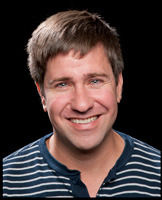



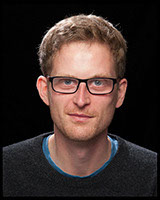
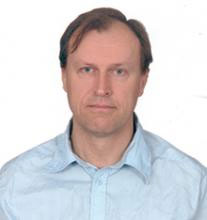

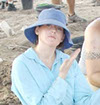
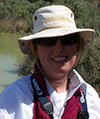
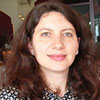

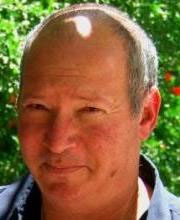
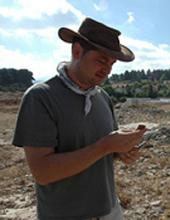
Department of Archaeology, Durham University
Kamal specializes in the quantitative analysis and geological characterization of ancient ceramics using archaeometric techniques. He is interested in human adaptation to changing social, economic, and environmental conditions, especially as related to increasing settlement density, and his research focuses on understanding the social and economic changes that accompanied the development of the first urban landscapes of the ancient Levant.
Professor, Department of Anthropology, University of Toronto
Michael focuses on lithic analysis, paleoarchaeology and human evolution, the history of archaeology, and the archaeologies of Near East, France, and South Africa. He has conducted fieldwork in Wonderwerk Cave in South Africa, Wadi Mataha in Jordan, and Kebara Cave in Israel.
Professor, Department of Archaeology at the University of Haifa
Ayelet Gilboa is currently head of the Zinman Institute of Archaeology at this university. She codirects the Tel Dor Excavations and Publication Project in Israel and directs the Shikmona (Josheph Elgavish Excavations) Publication Project. Her main interests are cross-Mediterranean interconnections, Phoenicians, Sea Peoples, Iron Age ceramics, Iron Age chronology, methodology of archaeological site reports, and the symbolic properties of material culture.
Institute for Prehistory and Early History and Medieval Archaeology, University of Tuebingen
Doga's research focuses the archaeobotanical investigations of ancient plant remains of two archaeological sites, Tell Tayinat and Zincirli Höyük, located in the northern Levant. It aims to distinguish environmental, climatic and anthropogenic factors which may have been affected the palaeovegetation at the sites under consideration during the Bronze and Iron Ages.
Lecturer in the Department of Archaeology, Durham University
Dan is a Landscape Archaeologist with a focus on the Near East and Central Asia during the Holocene. He runs two major research projects. The Semiyarka Urban Survey, and the Climate, Landscapes, Settlement and Society (CLaSS) project, which examines the relationship between complex human societies and climate change over the last 8,000 years. He also directs the Durham Archaeology Informatics Laboratory, a research hub dedicated to Landscape Archaeology, GIS and remote sensing and computational approaches to the archaeological record.
Professor, Ben-Gurion University of the Negev
Gunnar is Associate Professor at the Ben-Gurion University of the Negev. A specialist in Levantine archaeology, he has conducted archaeological excavations in Syria, Jordan and Israel.
Faculty of Information, University of Toronto
Steve Marks is the digital preservation librarian at the University of Toronto. His day-to-day job is to ensure that the library has the planning and technical infrastructure in place to safely preserve the university’s digital stuff – including licensed resources, archival and special collections, data, and whatever else we decide we want to keep. His main research interests are design of information systems, preservation planning and policy, futzing around with obsolete media types, and the preservation of video games
Associate Professor; Dept. of History of Art and Architecture, Boston University
Sussan's research interests focus on the Ancient Mediterranean, particularly the intersection of the Greek and Phoenician worlds, with emphasis on ethnicity, identity and culture. Greek and Phoenician art and archaeology. She is co-director of the Tel Dor Excavation Project
Coordinator, Festival Programs, Royal Ontario Museum
Zoe focuses on making academic research accessible to the public. While working at the ROM, Zoe has taken on the challenge of transforming the Museum’s Festival Programs into a dynamic platform where arts, music, history, and culture are explored with an innovative schedule of performers, storytellers, chefs, academics, and artist. The past can only be understood through our own experience of it and Zoe passionately believes that museums were made for people of all ages and interests, without boundaries or barriers.
Leminia is a scientific associate at The Technical University of Crete. She has worked on the Dynamic Graphics Project for high performance visualization of geo spatial information at U of T. Her interests are also to integrate database management systems with computer graphics tools for effective modeling and use for natural resources. She has been working in several projects in many different areas of image processing, photogrammetry and remote sensing, data quality, spatial data mining and spatial databases. She has published extensively in the general area of Geo informatics.
Assistant Professor of Assyriology, University of Chicago
Hervé Reculeau is a historian of Syria and Mesopotamia in the second millennium BCE. His research centers on the environmental and social histories of the ancient Near East, with a particular focus on landscapes and the interaction between humans and their environment from the technical, historical, and socioeconomic points of view. Among his special interests are irrigation practices and devices, agricultural works and techniques, and the social settings of the Syrian and Upper Mesopotamian countryside, as well as their relationship to urban centers.
Institute of Archaeology, Hebrew University
Professor, Department of Maritime Civilizations, University of Haifa,
Assaf is the head of the laboratory for Coastal Archaeology and Underwater Survey. His research is primarily concerned with the ways that the cultures of the Eastern Mediterranean during the Bronze and Early Iron Ages (e.g. Canaanites, Philistines, Myceaneans, Cypriots and Phoenicians) interacted with each other as well as adapted to the ever changing political, social and ecological conditions of the eastern Mediterranean. He has published extensively on interactions between the Aegean and the Levant during the second millennium B.C.E. and is the codirector of the excavations at Tel Kabri and the underwater excavations at Tel Dor.